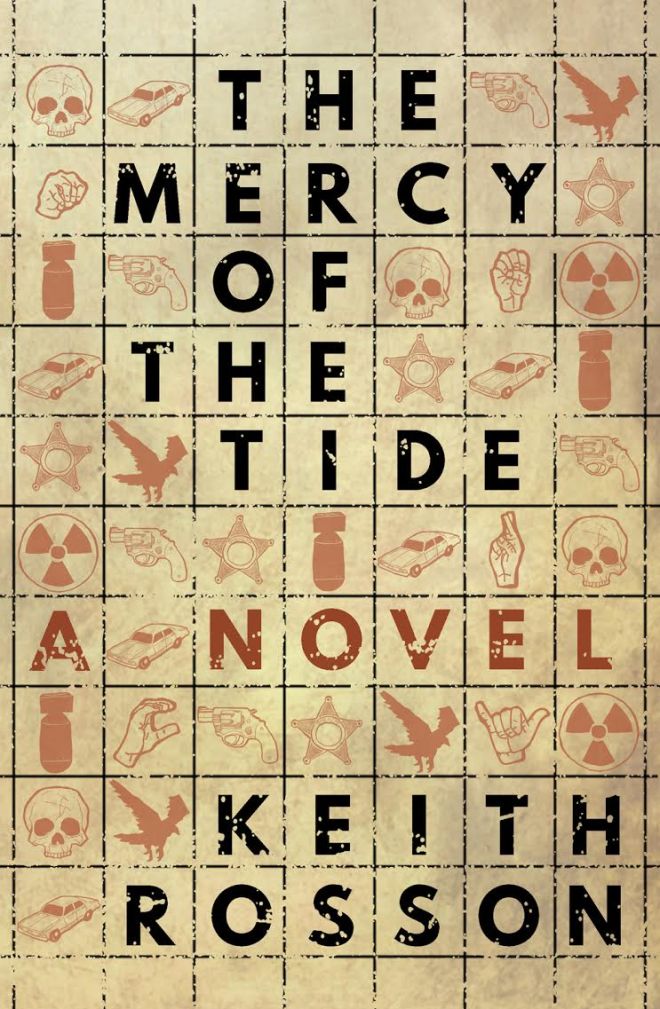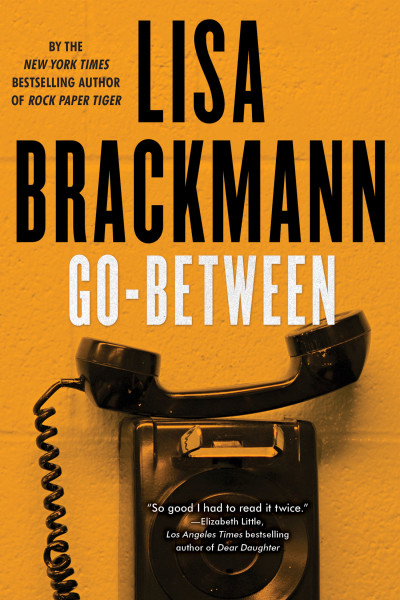I’ll admit that sometimes I review books by friends and acquaintances of mine. I do it often, actually. It is somewhat nepotistic in the sense that I choose my friends’ books as the subject of my reviews instead of books by strangers. It’s not nepotistic in the sense that I won’t review a book anything but honestly. Whether I know you or not, I say only what I genuinely believe in my reviews. That said, here’s my review of Keith Rosson’s book Mercy of the Tide. You can read the review in its original form here.

There’s a sense of impending disaster. The guy from TV is president. Moscow and the KGB threaten the American way of life. The doomsday clock ticks ever closer to midnight. People far from DC and national politics struggle to live lives without feeling overwhelmed by a sense of powerlessness.
I’m talking, of course, about the alternate 1983 in Keith Rosson’s new novel The Mercy of the Tide.
The Mercy of the Tide opens in a sheriff’s office. A religious wingnut drops a mutilated seagull onto Sheriff Dave Dobbs desk. For the wingnut, the seagull portends something ominous and otherworldly coming to destroy this small coastal Oregon town. Dobbs feels slighted by the dead bird on his desk. Dobbs’ deputy, Nick Hayslip, grabs the wingnut and roughly evicts him. Dobbs and Hayslip aren’t interested in an abstract menace. Dobbs life was recently shattered when his wife Junie was killed in a car accident. Nick, for reasons that emerge later in the novel, is also devastated by this accident. Elsewhere in town, Sam and Trina Finster, the children of the woman who drove her car head-on into Junie Dobbs’ car, are trying to pick up the pieces after the loss of their mom.
Such is the backdrop for the novel. Something wicked is in the distance. Because this 1983 isn’t the one that happened but one that might have happened, nuclear apocalypse is still a looming threat. Trina, despite being nine, is obsessed with the threat. She believes the end is near. No one can comfort her. Her father is a commercial fisherman with no interest in international politics and little interest in raising his kids. Sam looks out for his kid sister, but he’s seventeen. The time is approaching when he should leave the confines of his hometown and reach for something bigger. The fact that Sam’s such an outcast doesn’t help matters. And what’s going on with this mysterious menace leaving mutilated animal corpses along the coastline?
The novel that unfolds somewhat defies genres. The mysterious menace lends a bit of a horror feel to the book. The small town cops forever driving in the rain gives it an air of noir. But Rosson’s willingness to show the consequences of the tropes of horror and crime novels take this out of genre fiction. When characters get killed, their death isn’t just a plot point. We care about the deaths. We mourn them, along with the characters in the book. When there’s a fight, the characters get hurt. They carry their wounds into subsequent chapters. The reader is never let off the hook.
At other times, The Mercy of the Tide feels like literary fiction. There are rich descriptions of coastal Oregon in a time that’s passed, and the depth of Rosson’s investigations into class, gender, disability, and anger go far beyond anything you’ll find in most mass-market paperbacks.
And it’s the anger aspect that carries the book for me. Understanding what anger is and how it operates may be the most important tool in navigating the next few years, because the one thing we see all around us today is a reason to be outraged. We seem to be trapped in an endless cycle of anger, and our anger is often justified. For Dobbs, there’s real reason to be angry. He lost his wife. Nick’s relationship with anger is valid, too. In both cases, though, they demand a form of payback. Whatever payback they get will prove to be unsatisfying. Their drive to enact that payback will doom them. But they hang on to it.
Sam Finster feels the anger early. He redirects it onto anyone and everyone. When his sister wipes out mud-sledding down a hill, his desire for payback leads him to laugh at her. Then he comes to his senses. He runs to help her and pulls her into his arms. As Rosson writes, “She was a slight weight that leaned against him, a weight nearly inconsequential. Christ, like she was mostly jacket. He felt blisteringly ashamed at his earlier resentment—he would take care of her. He would protect her. He would pick up Gary’s slack. She was so little, and she was nine, and afraid, and they had only each other now. He thought, I’ll do anything to make her safe.”
This scene occurs early in the novel, but it sets up the power of the book. We can watch characters consumed by their anger, their lust to make someone pay. We can watch anger destroy them as the world races toward a potential apocalypse. We can release that anger, let ourselves grieve, and learn what it means to love. We can be human and waver between those contrasting impulses. We can find ways to take care of ourselves and one another; we can find meaning even when we feel powerless and hope is hard to find.

 I have a love/hate relationship with crime novels. I love the heavy plots, the journeys into society’s seedy underbelly, the challenge of staying one step ahead of the mystery. I love how tough they are. I hate that most crime novels these days have cops, FBI agents, and the like as protagonists. I grew up a “white trash” kid, then became a punk rocker. Most of my associations with cops were as a kid or young adult getting harassed, shaken down, or cracked in the head by them. After suffering so many humiliations at the hands of the law, I can’t enjoy a book that makes those guys the heroes. Especially when the bad guys are so similar to the people I grew up with. So I mostly read old crime novels, stuff by Raymond Chandler and Dashiell Hammett and writers like them, writers with a distrust of the system and of the wealthy, writers whose protagonists are outsiders just trying to make it. Where, I often wonder, are the contemporary equivalents?
I have a love/hate relationship with crime novels. I love the heavy plots, the journeys into society’s seedy underbelly, the challenge of staying one step ahead of the mystery. I love how tough they are. I hate that most crime novels these days have cops, FBI agents, and the like as protagonists. I grew up a “white trash” kid, then became a punk rocker. Most of my associations with cops were as a kid or young adult getting harassed, shaken down, or cracked in the head by them. After suffering so many humiliations at the hands of the law, I can’t enjoy a book that makes those guys the heroes. Especially when the bad guys are so similar to the people I grew up with. So I mostly read old crime novels, stuff by Raymond Chandler and Dashiell Hammett and writers like them, writers with a distrust of the system and of the wealthy, writers whose protagonists are outsiders just trying to make it. Where, I often wonder, are the contemporary equivalents?